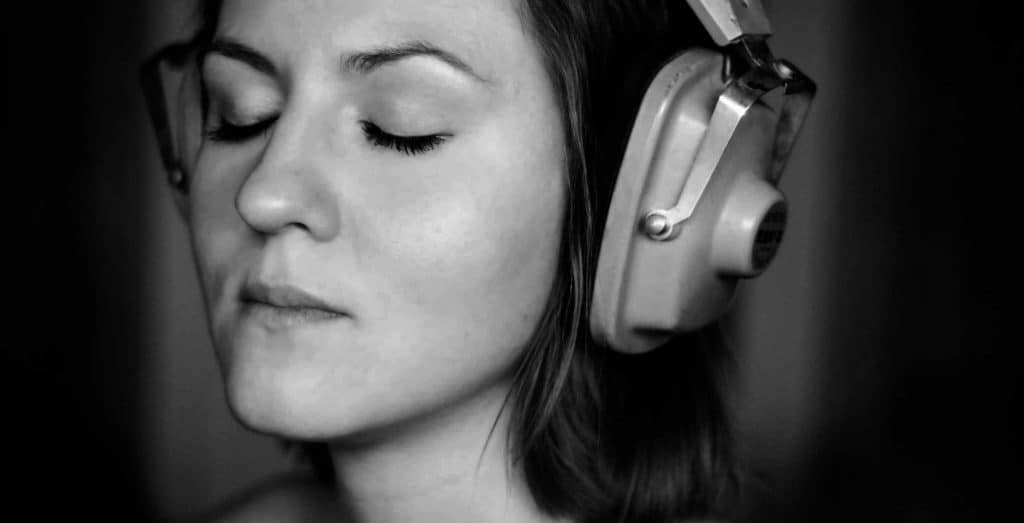If you’re in the creative industry, you may wonder – “What is royalty-free music?” It can be confusing, especially if you’re not a music creator yourself. What are royalties, and how do they relate to copyright? How can you use royalty-free music in your projects? Whether you have a YouTube channel or promote on other social media channels, adding music can take those creations to the next level.
But using the wrong type of music can result in severe penalties, including copyright strikes and demonetization. Royalty-free music is one way to get the background music you want in your projects without worrying about penalties.

What Is Royalty-Free Music?
Royalty-free music means you pay a one-time licensing fee in order to use the music. You don’t have to pay any royalties when you use the music in the future. You can use it multiple times on different projects and never pay a royalty fee. You aren’t the only person who can use the music, though. The artist can sell the music to multiple people under the royalty-free license.
Traditionally, you would have to pay a licensing fee every time you use the music. This can add up quickly, and it can be more work for you as the customer. The licensing ingredients can become complicated to manage.
Is Royalty Free Music Free?
Royalty-free music is not free to use, despite the word “free” in the name. You’ll pay a one-time fee to use it. The free part only applies to the payment of royalties in the future when you use the music. You won’t have to pay anything else for the music once you pay the initial fee.
You’ll typically pay less overall for royalty-free music, though. Since you just have a one-time fee, you know what you’re paying upfront. You can use the music endlessly with no additional costs. Under a traditional music license, you’ll pay every time you use the music. Over time, that can cost you more than paying the upfront fee.
Music and Copyrights
When artists create music, they have a copyright on that song. They have the right to music royalties for different uses of the song. There are different types of royalties depending on how the music is used. Synchronization royalties are what you would pay to use music in your visual media, such as a YouTube video. This is the type of royalty that’s covered, so you don’t have to pay those royalties when you use the music in your videos.
Performance royalties are due to the artist when a song is played in public, such as on radio stations, in stores, or in a nightclub. They’re also due when the song is performed or recorded by someone else. When an artist offers up a song free of royalties, it doesn’t mean they’re giving up their copyright on the music. The musician still owns the music and retains complete control over it. They can offer it to different people for different uses, and they may still get some royalties depending on how those people use it. The royalty-free benefit only applies to the synchronization royalties. The artist still may receive performance royalties from the music if it’s played in public.

Why Use Royalty-Free Music?
One of the biggest perks of this type of music is the budgeting aspect. You know what the one-time fee is when you purchase it. You don’t have to worry about budgeting more money in the future if you want to use the music in another video or project. It’s more convenient because you handle the fee upfront. Then you’re free to use the song as much as you’d like and in any projects you want.
If you’re a YouTube creator, using music that won’t get you hit with a copyright strike is essential. Using music that’s not royalty-free could cause you to lose monetization on that video. YouTube could take down the video or even shut down your entire channel. This is a great way to add music to your creations. It gives you access to a variety of high-quality music that fits your project.
Benefits for the Artist
It may seem like the artist gets the short end of the deal, but it can be a good way to get the music out there. It’s an appealing way for creators to get access to music. If an artist offers a song royalty-free, it may get more exposure than it would otherwise get.
The artist is still making money because of the upfront fee. And to be super clear, offering music this way doesn’t mean the artist is letting people use the music for free. Customers may buy even more music because it’s more affordable and easier to pay a one-time fee. This can boost the artist’s overall sales.
Using Royalty-Free Music
One of the biggest uses for royalty-free music is YouTube videos. Adding background music makes your videos seem more professional. Music can set the tone for a video. It can inform the viewer how they should feel about what they’re watching and hopefully makes the experience more interesting, plus could help you get more views.
Where to Find Royalty-Free Music
Many websites offer royalty-free music libraries, but quality matters. Look for a music provider you can trust with the selection of music you want. We offer a wide range of music in our library with affordable pricing options. You can search by music keyword or genre to find the perfect background music for your videos. All of our music is cleared for use on YouTube and other platforms without copyright issues. You don’t have to worry about your videos getting blocked or demonetized.
Add Music to Videos Now
If you produce content, you may find yourself asking, “What is royalty-free music?” Now that you know the answer, you can decide if it’s the right option for your projects.
Browse our music library to find the perfect songs for your upcoming videos and projects. Our affordable pricing makes it easy for individuals and small businesses to get the music they need.